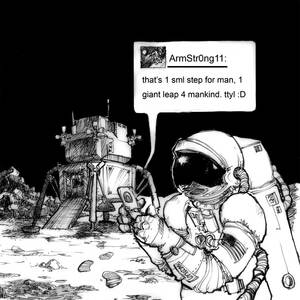Twitter no longer just for the twits of America
Despite initial skepticism and almost excessive simplicity, Twitter has blown up. This popular tool, designed for social networking through instant status updates, has been effectively utilized by users such as Snoop Dogg, the New York Times and even the United States Air Force.
Created in 2006, Twitter exploded in popularity during the bombings in Mumbai, and continued to increase in usage during other significant events such as the presidential election and the emergence of the swine flu.
Twitter is shaping up to be more an effective distributor of information than a simple internet fad for several reasons, the first of which being its ease of use. Users can post tidbits of information — no longer than 140 characters in length — via phone or the Internet. So-called “followers” may then read these updates, as well as comment on the updates or even “retweet,” which essentially involves reposting the original tweet to the follower’s own page.
The lack of annoying applications, unorganized information and the need to create a tediously designed profile has pushed Twitter to the forefront of the information-hungry Internet user’s preference.
The second reason behind Twitter’s prominence is the seemingly genuine and intimate connection it creates between users. Pete Carroll’s twitter, for instance, has more than 27,000 followers, most of whom are interested to see what the coach has to say about topics ranging from music to the NFL draft. The tech-savvy coach makes sure to tweet every few hours, posting sweet nothings such as “Song of the day is a mothers day tribute for all the love our moms ‘always’ bring to us… always by stevie wonder,” and “in case you were worried, the car’s all fixed now… just a nail in the tire… now which one of you did that???” This level of tweeting creates a relationship between celebrities and their fans completely lacking in fan pages and scattered message boards. Concise and often-humorous celebrity tweets are a refreshing change from the prepared answers usually given to interviewers.
Additionally, organizations and influential people have discovered that they can use Twitter to relay their messages to the public. When the U.S. Government Accountability Office reported that the Air Force’s Global Positioning System satellite system was doomed to fail due to a shortage of satellites, Air Force officials utilized Twitter to assuage fears. With calming tweets such as “Agree w/ GAO thr’s a potential risk, but GPS isn’t falling out of the sky–we have plans 2 mitigate risk & prevent a gap,” Air Force officials found a way to communicate directly with the people.
Although the prevalence of this tool may reduce the need for journalists, it is perhaps a worthy trade-off. Journalists need not worry; even major news
corporations are harnessing the power of Twitter to better communicate with their readerships.
There is a downside, however, to such a direct tunnel of communication: There is no regulation of what is conveyed. For example, the public would be better off reading about a controversial event through the investigative reports of journalists rather than through one-sided civilian rants. In many instances, a third-party news outlet is beneficial. As long as this disadvantage is realized, Twitter will remain a useful information tool that allows for a direct relationship between the public and those in the public eye.
Despite the limitless barrage of useless information that comes along with important news, Twitter has pulled away from its gimmicky roots and evolved into a convenient medium for relaying knowledge.
Gokul Agrawal is a sophomore majoring in business administration.

